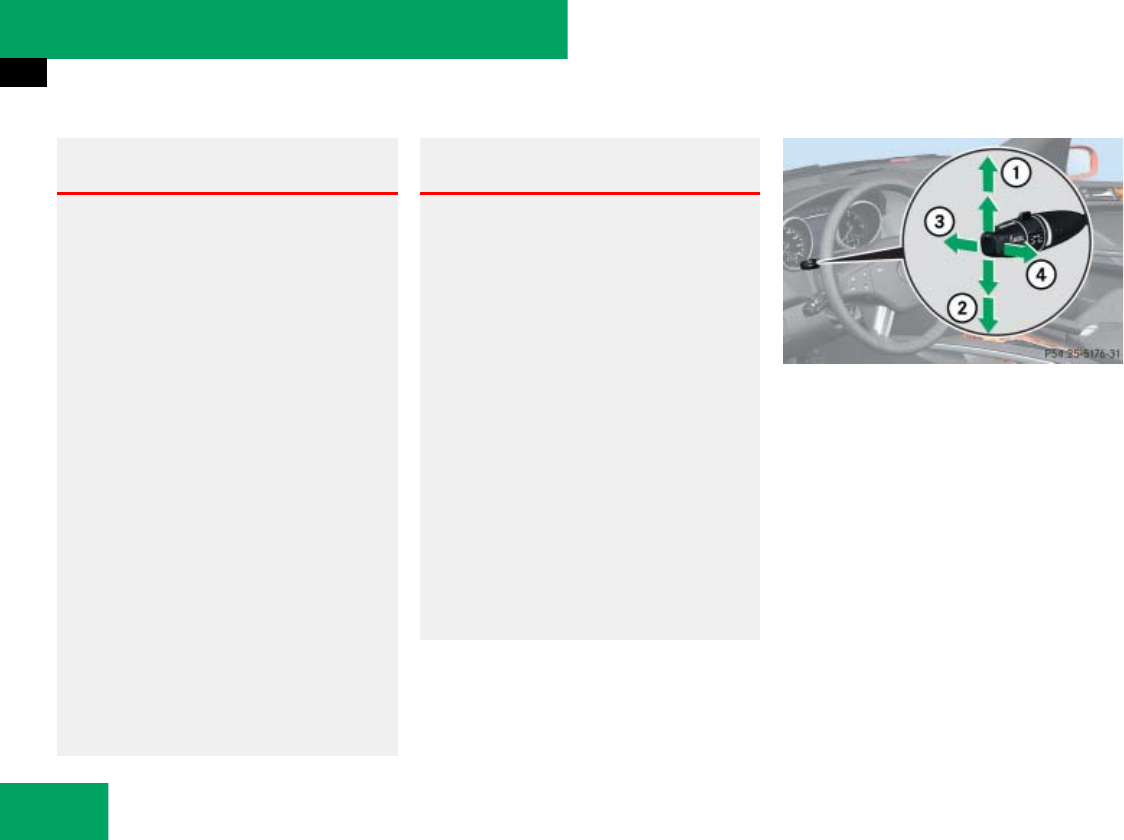
246
Controls in detail
Driving systems
1 Setting current or higher speed
Adjustment in 1 mph increments (to
the resistance point) or 5 mph
increments (past the resistance point)
(Canada: 1 km/h or 10 km/h)
2 Setting current or lower speed
Adjustment in 1 mph increments (to
the resistance point) or 5 mph
increments (past the resistance point)
(Canada: 1 km/h or 10 km/h)
3 Canceling cruise control
4 Resume to last set speed
Warning! G
The cruise control is a convenience system
designed to assist the driver during vehicle
operation. The driver is and must always
remain responsible for the vehicle’s speed
and for safe brake operation.
Only use the cruise control if the road, traffic
and weather conditions make it advisable to
travel at a constant speed.
ț The use of the cruise control can be
dangerous on winding roads or in heavy
traffic because conditions do not allow
safe driving at a constant speed.
ț The use of the cruise control can be
dangerous on slippery roads. Rapid
changes in tire traction can result in
wheel spin and loss of control.
ț Deactivate the cruise control when
driving in fog.
The “Resume” function should only be
operated if the driver is fully aware of the
previously set speed and wishes to resume
this particular preset speed.
Warning! G
The cruise control brakes automatically so
that the set speed is not exceeded. The
brake pedal depresses when the cruise con-
trol engages the brakes.
Keep driver’s foot area clear at all times,
including the area under the brake pedal.
Objects stored in this area may impair pedal
movement which could interfere with the
braking ability of the cruise control system.
Do not place your foot under the brake pedal
– your foot could become caught.
Keep in mind that the cruise control is a
convenience system designed to assist the
driver during vehicle operation. The driver is
and must always remain responsible for the
vehicle’s speed and for safe brake
operation.


















